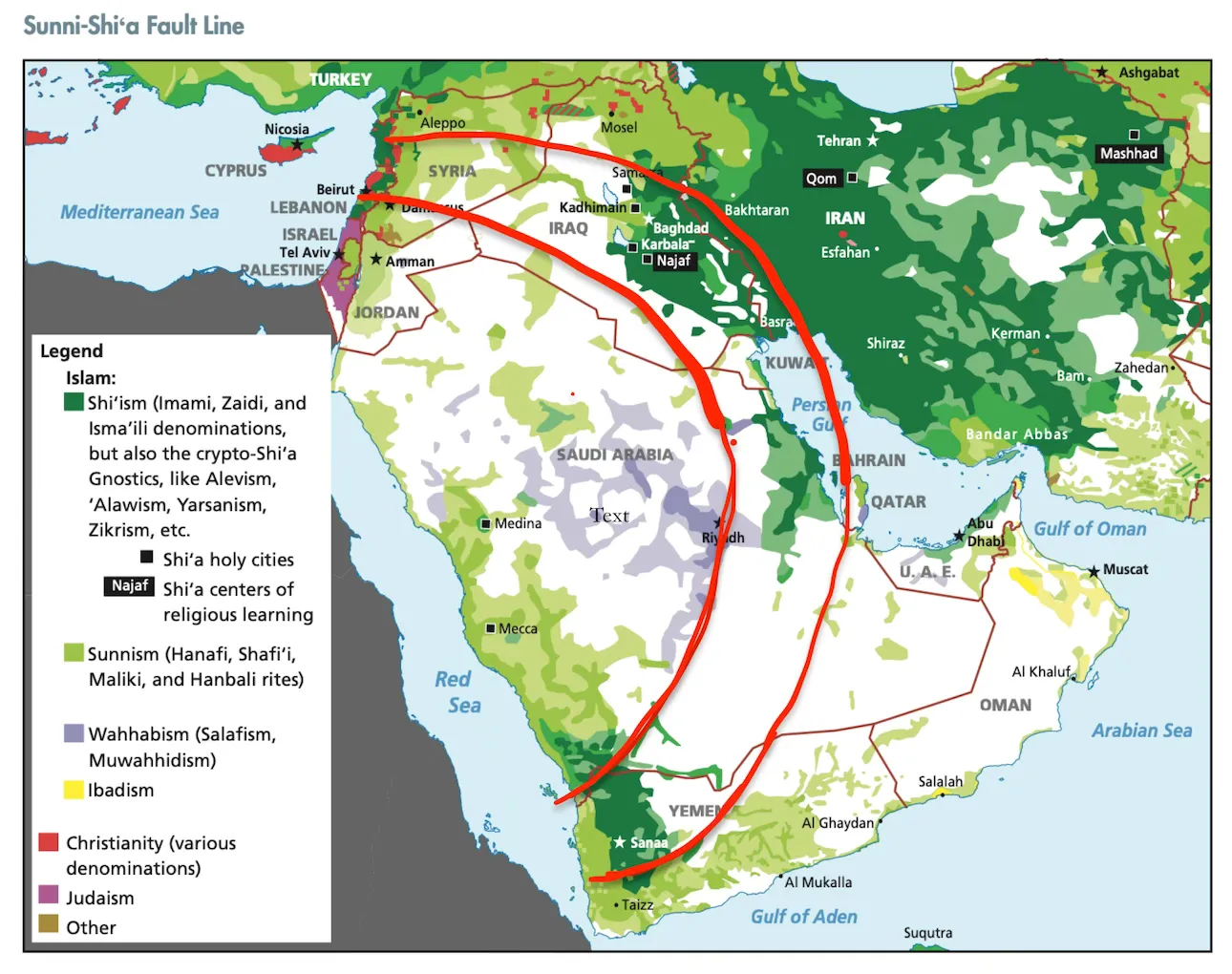The Heart of the Sunni – Shi’a Rivalry
“Borders and Factions” is a blog about international relations, focusing on the influence of the Sunni – Shi’a divide in the Middle Eastern region and beyond.
As a result of globalization, geopolitical tensions (the relationship between geography and politics) affect us all. For example, in 2021, a political crisis between Saudi Arabia and Iran triggered a 10% rise in oil prices. For someone living in Spain, this was directly responsible for a 1% increase in the Consumer Price Index (CPI), according to the Bank of Spain’s quarterly report1. The current geopolitical situation and the persistent tensions between Iran and Israel could lead to a much larger increase in energy prices.

The Path of the Crescent
Middle Eastern political life has been dominated by Islam since the 7th century. In this context, the “Shia Crescent” refers to the geographic corridor that spans Iran, Iraq, Syria, Lebanon, and western Yemen, where the Shia community has a significant presence. This strategic belt not only represents a cultural and religious link but also serves as a focal point of the geopolitical rivalry between Iran and Saudi Arabia, the leading Shia and Sunni powers, respectively.
How Do Shias and Sunnis Differ?
Both communities trace their origins to the leadership succession after the Prophet Muhammad’s death in 632. Sunnis believe leadership should be assumed by someone from among the seven tribes that governed the Arabian Peninsula. Shias believe it should pass to a male from the Prophet’s family. Since no male heirs existed, they chose Ali—Muhammad’s cousin and son-in-law—as their leader.
They both share basic beliefs (the oneness of God, Muhammad as the Prophet, and the five pillars of Islam) and follow the Quran as their sacred text. However, Sunnis give greater authority to the Quran and the Sunnah (knowledge about Muhammad’s life), while Shias place greater emphasis on the interpretations of these texts by the Imams (historical figures in Shia tradition).
Unresolved Conflicts in the Shia Crescent
This Crescent has been decisive in various ongoing conflicts shaping Middle Eastern geopolitics:
• Syrian Civil War (2011–present): Iran’s support for Bashar al-Assad’s regime by sending troops and Shia militias like Hezbollah.
• Yemeni War (2014–present): Characterized by clashes between Sunnis (majority in eastern Yemen) and Shias (majority in the west). Iran has supplied arms and training to the Houthi Shia militia.
• Conflict in the Levant (2023–present): Initially focused on the confrontation between Israel and Hamas, but later involved the Shia militia Hezbollah and the killing of Ismail Haniyeh, Hamas’s political leader, by Israel during his visit to Iran—highlighting the power of sectarian dynamics in the Middle East.
What to Expect from This Blog
We invite readers to reflect on how history, religion, and politics are interwoven in shaping today’s Middle Eastern geopolitical landscape. How might these factors influence our perceptions and decisions? We encourage you to share your thoughts in the comments and continue exploring this region’s complexities with us.
- https://www.bde.es/f/webbde/SES/Secciones/Publicaciones/InformesBoletinesRevistas/BoletinEconomico/21/T3/Fich/be2103.pdf ↩︎

